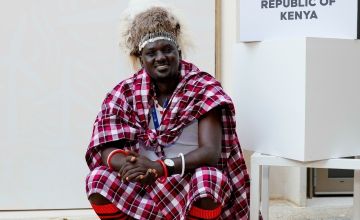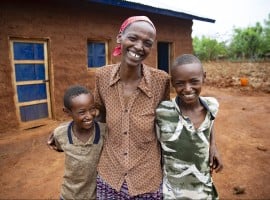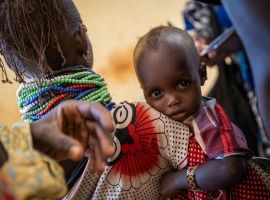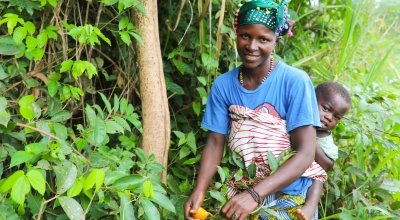
Read our 2024 annual report

Knowledge Hub
In between COP29 in Baku and this year’s COP30 in Belém comes the annual UN Framework Convention on Climate Change in Bonn. Here’s what you need to know.
In the world of climate response and resilience, the majority of eyes are already on the city of Belém, Brazil, which will host the 30th annual Conference of the Parties (COP30) this November. However, many are currently focused on a more pressing event: SB62, or the 62nd annual sessions of the Subsidiary Bodies of the UN Framework Convention on Climate Change (UNFCCC).
What is SB62?
Between June 16 and 26, the German city of Bonn (where the UN Climate Change Secretariat is headquartered) will host this annual climate conference that takes place roughly at the midway point between COPs. While the autumn conference is a major gathering for politicians, diplomats, humanitarians, activists, and other public figures to discuss and determine the political elements of climate response, the Subsidiary Bodies meetings, or SBs, are a key event to focus more on the technical elements.
You don’t expect to see as many celebrities, but the groups who meet — the Subsidiary Body for Scientific and Technological Advice (SBSTA) and the Subsidiary Body for Implementation (SBI) — comprise key figures in determining the future of our world given increasing environmental issues and natural disasters. It’s a lot of acronyms, we know, so let’s spell out what we can expect from SB26, and why it matters.

What’s on the agenda for SB62?
Like COPs, SBs focus broadly on climate policy and action in the long term, and more specifically on climate finance.
Baku to Belém: A roadmap to $1.3 trillion
This is a key initiative that launched last year at COP29 to scale-up climate finance for low-income countries. The goal is to reach an annual investment of $1.3 trillion (USD) by 2035. It also builds on a previous goal (the New Collective Quantified Goal) that had high-income countries committing to $300 billion per year, after experts realised this fell short of the actual needs.
We don’t expect to see the roadmap fleshed out in Bonn this month, but the discussions will be critical for continuing this ten-year project in Brazil in November. SB62 delegates will likely focus on implementation timelines, quality of support and funding, access challenges, transparency, and accountability.
The Sharm el-Sheikh Dialogue
The Sharm el-Sheikh Dialogue was established as part of the 2015 Paris Climate Agreement. It’s often mentioned alongside the Paris agreement’s Article 2.1c, which lays out the aim to:
“[S]trengthen the global response to the threat of climate change, in the context of sustainable development and efforts to eradicate poverty, including by… making finance flows consistent with a pathway towards low greenhouse gas emissions and climate-resilient development.”
This is obviously an “easier-said-than-done” scenario, and so the Sharm el-Sheikh Dialogue became a process for establishing a common understanding between countries. The first SeSD workshops were held in 2023 and two will be held this year, starting with SB62. UNFCCC notes that these workshops “have made some headway,” but “key questions remain unanswered” and parties are still trying to achieve a common ground on understanding the scope of Article 2.1c, so that will be a key aim for this year’s dialogues.
Global Goal on Adaptation (GGA)
This is another byproduct of the Paris Agreement, and a big one: The GGA is meant to serve as a unifying framework that can drive political action and finance for adaptation on the same scale as mitigation. In 2025, parties are hoping to agree on a set of roughly 100 indicators that can give us quantified, measurable goals to measure progress against.
There are other measures to mobilise finance, technology, and capacity-building — all of which are critical to driving real-world results. Because of this, they need to be comprehensive, but also manageable and globally-applicable. They also have to account for women, children, youth, and the rights of indigenous people.
Loss and Damage Fund
You may have heard about this in the last few years around COPs. The Fund for Responding to Loss and Damage (aka the Loss and Damage Fund) was established to do exactly what it says on the tin. The key focus here is for loss and damage experienced by low-income countries following climate events, particularly environmental impacts that communities cannot adapt to or mitigate against.
The Loss and Damage Fund was established in 2022, and is still being codified. It isn’t an official agenda item, but we can expect some decisions to be made in how the Fund will operate given the larger conversations around financing and environmental accountability.

How SB62 looks ahead to COP30
SB62 will also look ahead to COP30 and Brazil’s incoming presidency. Brazil will play an active role in Bonn this month as participants shape the political agenda and operational planning for the November conference in Belém.
This includes some lingering issues from COP29, often called “hangover negotiations” that were not finalised last year in Azerbaijan. They will become part of the roadmap from Baku to Belém. This includes the climate finance goal and pathways for implementing the Global Stocktake.
These unfinished negotiations will add some complexity to Brazil’s presidency of this year’s COP, adding pressure to move the agenda forward and rebuild trust among the parties — particularly between high- and low-income nations, where divides over finance, equity, and accountability remain stark. We can expect Brazilian leaders to use SB62 as a meeting ground for informal consultations, bilateral meetings, and thematic dialogues that will help set the tone for COP30.

Concern at the Bonn climate conference
While SBs are more technical, they still bring together a broad range of observers, including NGOs, advocates, local governments, and academic institutions. Concern is attending SB62 because it serves as a vital platform for engagement in the heart of the UNFCCC’s negotiation process.
Observer constituencies are also a key factor in these meetings. While we’re not formal negotiators, we work together as collective voices that call attention to key matters and advocate for certain outcomes through evidence-based research, community perspectives, and policy proposals. It’s a reminder that civil society helps to drive both ambition and accountability.
Concern, in collaboration with Mercy Corps, PLAN International, and the think tank ODI, will host a side event on Thursday, June 26, 2025, at the UNFCCC’s Berlin Room from 13h30 to 14h45. The event, “Elevating Adaptation Finance in the Baku to Belém Roadmap,” will look at steps to achieve an ambitious, equitable, and fit-for-purpose roadmap, especially in terms of ensuring that climate finance will meet the needs for those who stand to lose the most.




